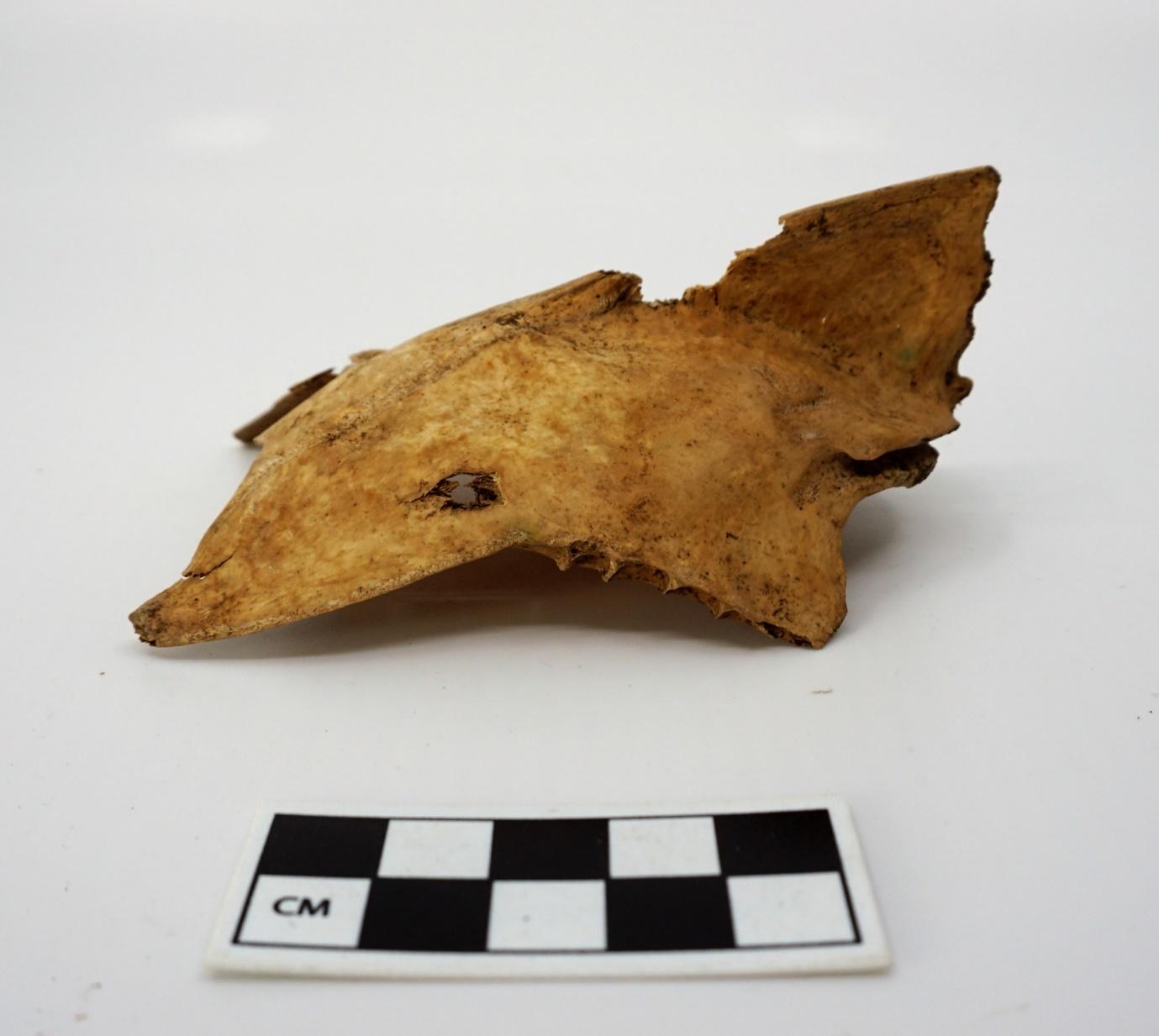
1 minute read
Fragmentation
The archaeofauna from Litlibær was handpicked but since the site was used for a
student training excavation the rate of recovery is likely to have been high. This is evidenced
by the fact that rat bones, juvenile bird bones and two bones from arctic tern which are very
small were recovered at the site. While sieving is the ideal way to minimize recovery bias of
animal remains during excavation the effects of recovery bias on the Litlibær archaeofauna
are likely small.
Fragmentation
One way to estimate recovery bias and to understand the taphonomy of an archaeofaunal
collection is to look at the size of the material recovered (Table 3 and Figure 5). The number
of elements recovered smaller than 1 cm is relatively low, due to lack of sieving but recovery
of bones in the 1-2 cm category is high, likely due to high quality hand picking. The relatively
low number of elements larger than 11 cm is explained mostly by the fact that the majority of the material found at Litlibær comes from secondary butchery1 and consumption rather than from primary butchery2 activities.
Table 3: Fragment sizes of bones and teeth in the Litlibær archaeofauna.
Fragment size in cm TNF % of TNF 0-1 139 12,2% 1-2 344 30,3% 2-5 355 31,3% 5-10 212 18,7% Larger than 11 85 7,5% TNF 1135
1 Secondary butchery is the subdivision of a dismembered animal carcass into smaller cuts of meat (Reitz & Wing, 2008, p. 126). 2 Primary butchery is defined as initial dismemberment of an animal carcass (Reitz & Wing, 2008, p. 126).








